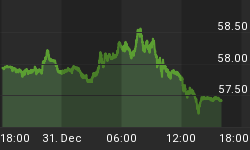Over the past several months, there has been rotation from cyclical to non-cyclical stocks, which suggests the cyclical bull market is in a late stage. However, there has also been a general rotation between bonds, stocks, and commodities, given financial institution's asset allocations.
The seven-month chart below shows SPX (blue line), TLT (gray line), OIH (black dashed line), and GLD (gold dashed line). In May, SPX OIH and GLD were at high levels, while TLT was at a low level. Over the subsequent two months, SPX OIH and GLD fell sharply, while TLT rose. Most recently, SPX and TLT rose, while OIH and GLD continued the downtrend.
Oil and gold are in structural bull markets, while SPX is in a structural bear market. The relatively high price of TLT reflects expectations of slower economic growth or recession (i.e. the inverted yield curve; where long-bond yields are below short-term rates). Normally, oil and gold decline in periods of slow growth or recession. However, many oil stocks have P/Es below 10, while gold is also a hedge for inflation. Also, markets tend to discount prices. So, if oil holds $50 a barrel and gold holds $500 an ounce, for example, oil and gold stocks may stabilize at current prices. Consequently, if oil and gold stabilize at current prices, oil and gold stocks may rise, while SPX falls.
Normally, financial institutions are fully invested in ratios of bonds, stocks, and cash. Currently, it seems, institutions are keeping a relatively small ratio in cash, given the FOMC has drained liquidity from the (commercial banking) system, over the past two years, and the uncertainty of an easing cycle (given inflation remains elevated). So, perhaps, cash allocations will increase, which may lower bond and stock prices.

















